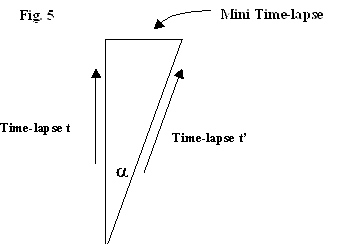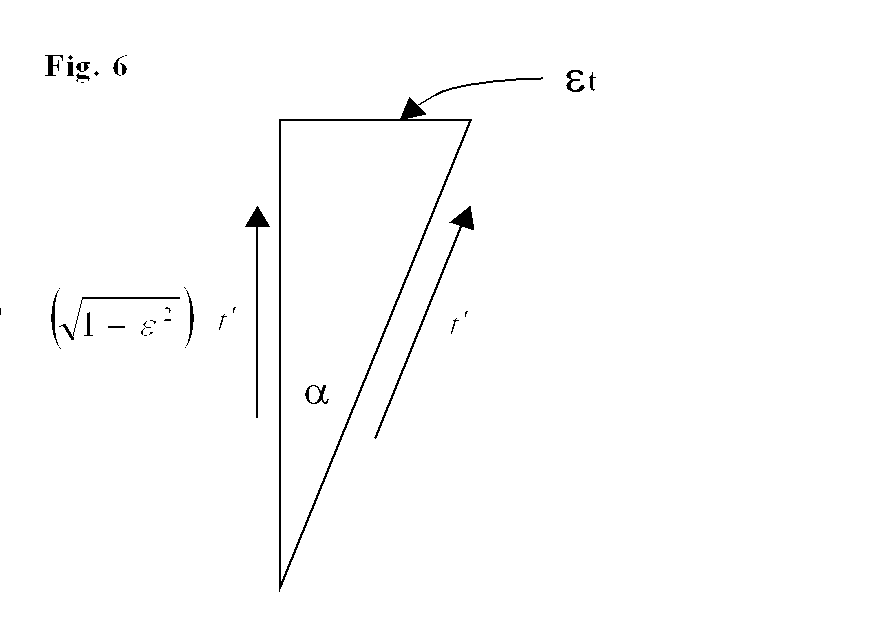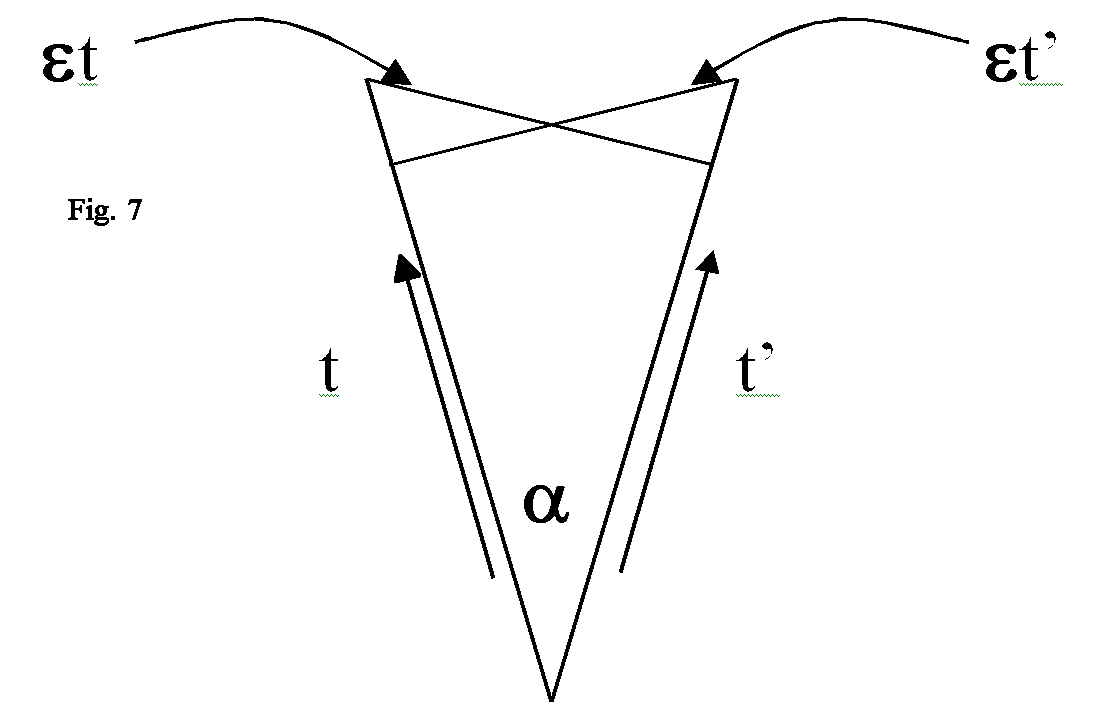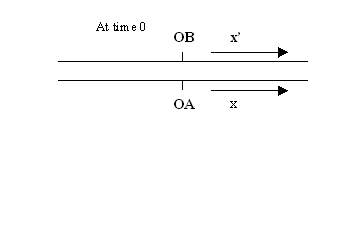
Universal Time
The attached document puts forward a new Dimensional Scheme, in terms of which one can describe and quantify the Universe. Its succinctness has lead some readers to assume, incorrectly, that it merely advocates copying the astronomer's habit of using time values as a convenient shorthand for distances, and extending this to all distances whatsoever. This is indeed a trivial observation, but it is not what is being proposed. Instead, it is seriously put forward that times are the actual stuff of extension in the Universe; and that lengths and space are artifacts invented by the human brain, forced on it by biological limitations on data-collection. Even this would be of only academic interest if Time were as inert a quantity as length; but Time has dynamic attributes, which, applied to what we know as space, shed new light on such things as Special Relativity. It has impact on Cosmology and philosophy; indeed it impinges universally. It is surely worth a little concentration on what is being said, if only to prove that it is mistaken!
Proposes replacing length measurements with time measurements. Derives Einstein's Special Relativity in time-units, thereby eliminating the sometimes criticised behaviour of measuring-rods and clocks in its currently accepted form.
If you and were both accosted by a passing stranger, and asked to listen to his marvellous scheme to generate unlimited electricity by his Perpetual Motion Machine, would we listen to his bright idea with serious attention to see how it worked? No, if we listened at all, it would be to see how he had gone wrong in his train of thought. The attached document might seem at first sight to be no different from that of the Perpetual Motion Man, it is very far from accepted wisdom; however, it flouts no established laws: it merely looks at them from a fresh perspective. In particular it offers a novel derivation of Special Relativity; a derivation that may be more acceptable to those who find difficulty with the present version.
When I was developing Precision-Ranging for Radar, it became second nature to think in microseconds; only when it became necessary to send the results elsewhere did one need to search for a conversion factor to turn the microseconds into yards or metres, or whatever was required. It therefore followed naturally to wonder whether this "measurement-friendly" unit could prove useful in three dimensions, particularly since it was the same as that of the "fourth dimension" - time. A scheme along these lines was discussed with physicist colleagues, but the reaction was negative. Quite a few years later it seems worthwhile to incorporate some intervening ideas, and re-offer it in the hope of a more favourable response.
Before setting out the scheme, some preliminary points need to be made. Conventional "Space-time" has three Cartesian axes; x, y, and z; but the fourth, t, has the additional characteristic of elapsing. To make it comparable it should have an origin or zero the same as x, y, and z. Thus times into the past would be "ago", and negative; times into the future would be positive. The more usual coordinate is historic time, but between the two is the relationship of elapsing. From a "now" origin the past is elapsing, and the future is coming towards us. From a historic perspective the present is moving forward in time at "Clock rate". With this second interpretation the future remains unmoving, and we move forward into it. Neither way of looking at things is properly represented by four orthogonal Cartesian coordinates, with a common zero at the centre. One should view with caution the use of algebraic manipulations for t in the same way that they would be used for x, y, and z. It is better to separate out any "elapsing" components, and manipulate them separately.
Anticipating what comes later, there are three important "elapsing" numbers:
(i) Time.
(ii) The interval between the origin and wavefront of electromagnetic radiation.
(iii) The displacement between two Newtonian Frames sliding steadily against each other.
In particular, noting the stipulation "steadily", the ratio (iii)/(i) is a dimensionless number, and will play a prominent role as the number ε.
The starting point for the new dimensionality is to dispense entirely with lengths. This is facilitated by modern electronics, which can maintain accuracy down to intervals in t that are smaller than for any other measurement unit. In contrast, the human body, which tries in its own way to quantify times and lengths, cannot discriminate below about one tenth of a second. Below this, signals are merged, and any smaller intervals need to be repeated regularly to be recognised as pitch (the ear), or wavelength (the eye). Biological structures appear incapable of measuring discrete small intervals of time; even bats with a kind of sonar can only manage milliseconds, nowhere near the microseconds or less of most human's local surroundings. Various biological subterfuges are resorted to, to get round this obstacle, and in turn these are built-in to the human display-system (Consciousness). No wonder it is difficult to imagine a time-structured world, when all our thinking is done in a mental framework of space-time. It is particularly difficult to fit Einstein's Special Relativity into our common-sense ideas of space moving forward into the future.
Einstein's Theory of Special Relativity has played a key role in Physics throughout the Twentieth Century. This has led many to treat it as a final and definitive description of how the world works. There is an alternative view that does not accept this, but considers that the quirks and oddities it shows are an indication of some unwise, ill chosen, or unjustified assumptions along the way. Encouragement to pursue this possibility is given by recalling from Scientific History a series of developments in the theory of Celestial Movement. Here, the starting-point is Ancient Greece around 400 B.C.. The Greeks observed that the stellar constellations were unchanging in configuration and in location one to another, and that they moved in unison across the sky. Using their experience on earth they concluded that there must be a framework holding the stars in their places, but being invisible would have the qualities of totally transparent crystal. After some misconceptions about the shape of the earth and the vault of the sky, they settled for a spherical earth surrounded by a spherical crystal sphere with stars embedded in it. Further independent spheres for the Sun and the Moon completed the scheme, giving a very acceptable and reasonable-sounding description of how the World was put together. That is, except for the wandering stars (the planets) which defied all their efforts to give each planet its own sphere and each sphere its proper motion. This last was abandoned as insoluble for many centuries.
Coming forward in time to the Nineteenth Century, physicists had made great progress on the firm foundation of Newtonian Dynamics. Towards the end of that century they came across their equivalent of the Wandering Stars -- the anomalous behaviour of Electromagnetic Waves in that these failed to conform to Newton's Law of the Composition of Velocities. These two situations, so far apart in time, each found its genius, both pragmatists, Ptolemy of Alexandria for the planets, and Einstein for the Electromagnetic Radiation. They did not address the reasons for the anomalies; they accepted them as facts and devised the necessary mathematics to make the numbers come out correctly. This was so successfully done by both, that their solutions, although as bizarre as the original anomalies, were accepted as a true description of how the world works. From the time of Ptolemy it took more than a thousand years until Copernicus rediscovered an idea that the early Greeks had considered and rejected -- that the Earth spins about its polar axis and travels in orbit round the Sun. Time-Dimensionality, or Universal Time is now put forward to fulfil the Copernican role for Special Relativity.
The following exposition is based on Einstein's embankment and train, with the embankment moving to the left and the train to the right. Additionally the embankment is frame "A" and the train is frame "B".
Figs. 1 & 2

Simultaneous Lightning Strikes at time t=0 Situation at time t'
It is this diagram that destroyed belief in any universal "Simultaneity". The light from the lightning flashes at the ends of the train cannot arrive together at observer OA on the ground and also arrive together at observer OB on the displaced train. But as the starting position is identically the same for both observers, after time t each should receive its two light flashes together. Indeed they would have done so had the train remained stationary. However, with the train moving, simultaneous flashes seen by OA will be observed to occur at different times by OB, and vice versa. Einstein resolved these contradictions by calling in aid the equation for an expanding electromagnetic wave, which also applies to inward travelling light. Viz.:
x2 + y2 + z2 = c2 t2 x' 2 +y' 2 +z' 2 = c2 t' 2
Eliminating y & z as invariants, and including the displacement vt, gives:
x2 = c2 t2 and x' 2 = c2 t' 2 or (x - vt) 2 = c2 t' 2
These can only be reconciled by making x' and t' linear functions of x and t and v. These functions, known as the Lorentz Transformations, are:


It is enlightening to repeat the diagram and the derivation of the Lorentz Transformation, but using the new units. This is Einstein's diagram, but in units of t.
Figs. 3 & 4

Starting again with the equation for Electromagnetic Radiation:
x2 + y2 + z2 = c2 t2 becomes: tx2 + ty2 +tz2 = t2
Since v and c are mongrel mixtures of length and time, they can be replaced wherever they occur in the form v/c by the dimensionless ε, = v/c.
(x - vt) 2 = c 2 t' 2 becomes: (t - εt) - t' 2
The conversion factors then become:
![]() and
and ![]()
Once the changeover to time-units has been made, there is no true simultaneity; each point has its own individual time. However, a conventional simultaneity can be set up throughout a.Newtonian Frame by adjusting the zeroes of all the clocks. This is done by sending clock readings over a free-space communication link; once adjusted, the clocks will continue to agree (on this conventional basis) thereafter. Similarly, clocks on a different Newtonian Frame can all be set to read the same, but not the same as on the first Newtonian Frame. It might be thought that the two sets of clocks would differ by a fixed amount, but this is not so; the method chosen to set the zeroes has the effect of skewing the simultaneity axes. These turn out to be two straight lines at an angle to each other. The cross-over point is arbitrary, being the outcome of choosing the zero-settings. The angle arises in the following way. Each Frame has some fixed time-intervals, (lengths in conventional terms), and some lapsing time-intervals, as exemplified and measured by its clocks. Additionally, there is another category of time-lapse arising from the steady displacement between the two Frames. A measurement in time-units of this displacement gives a constant plus a clock-like output, similar in all ways to the main clocks, but reading at a fraction of their rates. This fraction (or mini-timelapse) will be known as ε, and is measured along the axis of relative movement between the frames. It is in consequence orthogonal to the clock axis, and the time-lapse after time t is εt. The resulting diagram is:

Only a recipient of a between-frames signal can assess the value of ε; consequently observer OB will measure ε in terms of his clock system (t'). Putting this into the diagram gives:

To go from Frame A to Frame B involves multiplying A's clock reading by
![]()
This factor may be recognised as the Lorentz Transformation in Special Relativity. Here it is seen to arise from the skewing of both the time axes and the simultaneity axes by the angle α
The diagram used to show the derivation of the skewness α , is as understood by observer A. Observer B sees the inverse. Putting the two together gives (as it should) a symmetrical diagram:

This differs from convention in that the tracks of the communications between observers A and B are not co-linear.
Without it ever being spelt out, the equivalent diagrams for Special Relativity are:
Fig. 8

Fig. 9

Although Doppler and Red Shift are logically different, the measurement situation is the same. The time interval increases uniformly between two cosmic bodies at a steady rate readily calculated from the Hubble Constant. And whereas the simultaneity-skewness of a local moving frame is a temporary affair, readily changing with its speed, in the remote reaches of the Cosmos, the whole region is time-skewed to a major extent. The word "now", used in connection with deep space. becomes difficult to interpret.
Changing from Space/Time coordinates to Time-only coordinates gives a different interpretation of Einstein's Special Relativity. As a start there is no changing of lengths of measuring rods, as there are none! Secondly all the clocks keep the same time; any apparent discrepancy in clock readings is because at that place, and on that frame, that is the time.
Bernard Newsam
North Walsham
February 1994